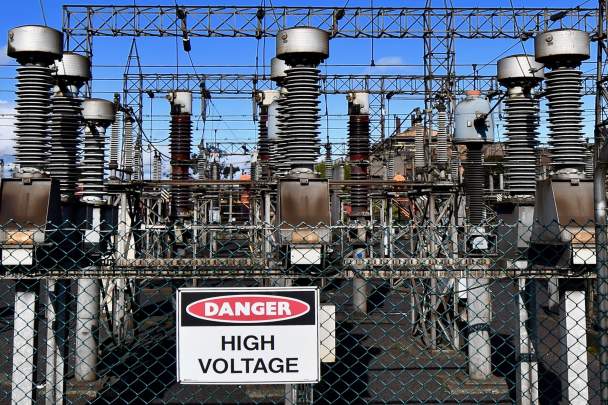Buyer of troubled Temco smelter wants lower power price

The company seeking to buy the loss-making Temco manganese smelter in northern Tasmania wants to negotiate a lower electricity price from Hydro Tasmania even though its current power contract runs until 2024.
A spokesperson for the Gutwein Government confirmed the Office of the Coordinator-General had encouraged discussions about Temco’s power supply contract between prospective purchaser GFG Alliance and state energy agencies.
“The Coordinator-General has facilitated introductions to Hydro Tasmania and TasNetworks so that GFG can negotiate its future energy arrangements with those energy companies at arm’s length from government,” a spokesperson said.
Hydro Tasmania told Tasmanian Inquirer that it had a “good relationship” with GFG Alliance and was “open to dialogue about their power arrangements at a time that suits them”.
“As with all of our major customers, our approach will be to find mutually agreeable terms that are commercial and sustainable for both parties, and in the interests of the Tasmanian people,” a Hydro spokesperson said.
South32, the operator of the Temco manganese smelter near Bell Bay, announced on 13 August that it and joint venture partner Anglo American had reached a binding agreement to sell the smelter to a subsidiary of the GFG Alliance for a “nominal payment”. The purchase still needs to be approved by the Foreign Investment Review Board.
GFG Alliance, which is owned by British billionaire industrialist Sanjeev Gupta and his family, has built a global company based on buying financially stressed steel and aluminium plants and modernising them.
In Australia, the GFG Alliance’s Liberty Steel subsidiary bought the stressed Whyalla Steelworks and associated iron ore mines in South Australia in 2017, with plans to upgrade the plant and switch it to run on renewable energy. Production from Temco is currently exported to steel producers around the world. Under GFG’s plan it would, at least in part, supply the company’s Whyalla steel plant.
A reduced power price for Temco would have financial ripple effects, including the possibility other electricity consumers would carry higher than necessary costs, Treasury would be paid a lower dividend or Hydro Tasmania would carry a higher level of debt.
The Temco plant was built by BHP in the early 1960s to supply its steelworks in South Australia and New South Wales, but in 2015 it was offloaded, along with other unwanted mines and plants, to a new company, South32.
By 2019, South32 had decided it too wanted to cut its losses on the smelter.
Who carries the costs if Temco gets cheaper power?
GFG has limited opportunities to cut costs to reverse the losses on operating the Temco smelter. It has agreed to continue to buy manganese ore from South32’s Groote Eylandt mine in the Northern Territory, leaving electricity and labour costs as the largest factors under its control.
Hydro Tasmania confirmed to Tasmanian Inquirer that its contract with Temco “remains in place” but said details including the duration of the agreement and amount of electricity supplied were commercial-in-confidence.
BHP’s March 2015 prospectus for potential shareholders in South32 stated Temco had recently extended its agreement with Hydro Tasmania until 2024. Temco’s contract provides for about 60-70 megawatts of power capacity.
A spokesperson for GFG Alliance said it was “too early to discuss specifics” about its power supply agreement. Asked if GFG had sought financial support from the Tasmanian Government, a company spokesperson said it was in discussions about “non-cash support” it “may be able to provide”.
A reduced power price for Temco would have financial ripple effects, including the possibility other electricity consumers would carry higher than necessary costs, Treasury would be paid a lower dividend or Hydro Tasmania would carry a higher level of debt.
In 2018-19, Hydro Tasmania paid the government a dividend of $120 million. It also warned the government of the potential consequences of requiring 90 per cent of after-tax profit to be paid as a dividend to the government. “This results in forecast debt that in the view of the Hydro Tasmania board may be unsustainable,” the board wrote in late 2019.
How secure are Temco’s jobs?
In announcing the deal to buy the smelter, the GFG Alliance said it would “secure the site’s 250 jobs”. It was a line repeated in media statements by Premier Peter Gutwein and the Labor Party’s Member for Bass, Michelle O’Byrne.
Asked if it had been given any guarantees about how long the jobs would be secure for, the Gutwein Government pointed to GFG Alliance’s media statement.
O’Byrne said the Labor Party had not received a briefing from GFG Alliance but based its comments on public statements by the company, South32 and the state government.
While the purchase of the smelter may secure the jobs in the short-term, the longer term outlook is less clear. Most analysts had considered the plant was likely to close as it is facing competition from new smelters in Asia and has a limited market in Australia. In 2015 BHP said only 10 per cent of Temco’s production was sold to steel industry customers in Australia and New Zealand.
Asked whether its plan is to continue production at the Temco site at the current level for the next five years, GFG was circumspect. “It is too early to discuss specifics, however, we have a clear plan for the site’s future,” the company’s spokesperson said.
Asked if a guarantee on jobs had been given to the Tasmanian Government, the GFG Alliance told Tasmanian Inquirer “we have no plans for job cuts. Our vision is to operate the site sustainably for the long term, so our preference is to keep the workforce, utilising their skills and experience.”
 @BobBurtonoz
@BobBurtonoz